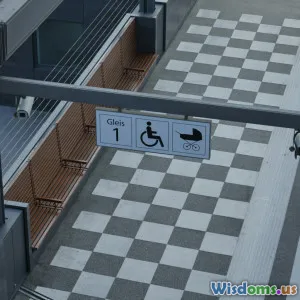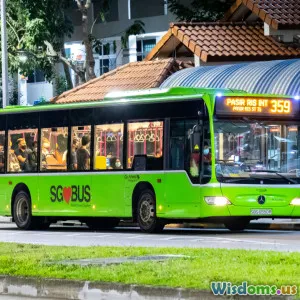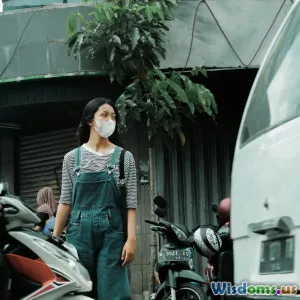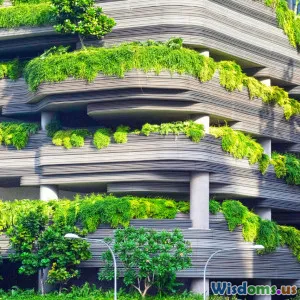
Why Some Skyscrapers Fail User Comfort Tests
13 min read Explore why modern skyscrapers sometimes fail at delivering comfort, and uncover lessons from real-world engineering missteps and triumphs. (0 Reviews)
Why Some Skyscrapers Fail User Comfort Tests
Skyscrapers rise as emblems of human innovation — metallic spires defining city skylines, celebrated for their grandeur and sophisticated engineering. However, beneath their impressive facades lies a less-talked-about reality: many towers don’t always prioritize the well-being of their inhabitants. Some skyscrapers famously fail user comfort tests, betraying the people they promise to serve. But why does this happen? And what can be learned from these missteps? Let’s pull back the curtain on the dazzling giants reaching into our sky, and discover why some leave their occupants less than delighted.
The Unseen Challenges Behind Tall Buildings
Skyscraper design is a discipline where ambition and utility constantly wrestle. As structures soar higher, the unseen forces impacting their usability – from wind pressure to vertical transport time – grow not linearly, but exponentially. For architects and engineers, the challenge isn't just building tall, but building tall and comfortable. But where and why do they stumble?
Wind: The Ghostly Sculptor of Skyscraper Experience
High Winds and Human Responses
One of the most critical — yet often underestimated — factors affecting user comfort in super-tall buildings is wind. At ground level, a gentle breeze is refreshing; 100 floors up, that same wind converts into higher pressure, stronger turbulence, and, at times, uncomfortable building sway.
Example: London’s “Walkie-Talkie” tower at 20 Fenchurch Street became notorious not for interior discomfort, but for its shape redirecting wind to the street level, blasting pedestrians with powerful gusts. But inside most skyscrapers, it's the invisible oscillations — the ever-so-slight swaying of the building — that can instigate nausea, induce headaches, and foster deep unease among occupants.
A 2010 study from the Council on Tall Buildings and Urban Habitat (CTBUH) reported that “human perception of motion may begin at lateral accelerations as low as 5-10 milli-g (where 1g is the acceleration due to gravity), far below what causes structural issues.” The John Hancock Center in Chicago, for example, showed that even minor lateral movement could make top-floor residents feel seasick on high wind days — despite the building’s solid safety credentials.
Mass Dampers: The Silent Guardians — Or Not?
The answer, engineers devised, was to install enormous 'tuned mass dampers' (TMDs) — massive weights moving opposite building sway, working like shock absorbers. Taipei 101’s 660-ton TMD is a signature feature. Yet, not all buildings employ or size these dampers effectively, especially older towers or cost-cut structures, exacerbating the subtle but disruptive sways that can render an office or apartment almost unbearable.
Temperature, Light, and Air: The Internal Climate Battles
Envelope Design and Solar Gain
Modern skyscrapers typically favor glass curtain walls for aesthetics and daylight. However, this glass-heavy approach, if mishandled, turns top floors into greenhouses. The iconic “Shard” in London faced searing summer conditions until advanced shading and climate controls were retrofitted after tenant complaints.
Data from the U.S. Office of Energy Efficiency & Renewable Energy suggest that glass facades increase cooling loads by up to 40% compared to traditional materials in some climates. Yet, mechanical HVAC systems can only compensate so much. Poor solar control hurts not just comfort but costs too, and is notorious in both older and some surprisingly recent towers.
Air Circulation & Quality: Beyond the Basics
Stale or poorly circulated air exacerbates discomfort, causing headaches, fatigue, and even “sick building syndrome.” While energy efficiency is prized, over-tight envelopes and poorly designed ventilation threaten occupant well-being. The Bank of America Tower in New York once held the title of greenest skyscraper, but critical voices noted occupant complaints of dry, recirculated air and comfort issues despite its LEED Platinum credentials.
The Battle Over Daylight and Glare
Maximizing daylight is an environmental and psychological goal — but without careful blade placement or smart window coatings, glare and heat spikes undermine the very intent. Users frequently resort to “DIY solutions” such as taping up cardboard or paper, a clear indication a feature isn't supporting comfort as intended.
Acoustics: Unwelcome Echoes and City Rumbles
Sound is often underestimated in vertical environments. Given the rigidity or sheer expansiveness of modern skyscraper interiors, sound can bounce, echo, and amplify in unexpected ways.
Case In Point: The Comcast Center
When the Comcast Center in Philadelphia opened, many praised its floor plates, open spaces, and glassy interiors. It was only after occupancy that noise complaints soared, with workers struggling to hold conversations amid a cacophony of echoing voices and whirring HVAC.
Materials and Reflections
Poor acoustic planning — such as minimal use of absorbing surfaces, improper placement of machinery (generators, lifts), or overlooking city-level background noise infiltration (as seen in NYC’s high-rise boom) — causes sound to become a daily irritant rather than comforting background.
Vertical Transport: The Psychological Toll of Movement
Elevator Waits and Ride Quality
Global consulting firm KONE estimates that in tall towers, people can spend up to 16 minutes a day waiting for or traveling in elevators. User comfort isn’t only about the ride’s smoothness — it's about predictability and access. The “single shaft” system in many mid-century towers now frustrates users as cities densify.
Algorithmic Upgrades: A Double-Edged Sword
Some buildings adopted 'destination dispatch' — where users input their destination floor before boarding. While efficient on paper, in practice it sometimes confounds visitors and causes surges at specific times, as seen after the implementation at the Heron Tower in London.
Circulation Bottlenecks
Skyscrapers with mixed-use intents (residential, commercial, hotel all sharing banks of elevators) often frustrate users with bottlenecks and complicated, unintuitive wayfinding. The result: irritation, stress, and lost time.
Occupant-Centric Design: Where Ambitions Clash With Reality
“Architectural Ego” at the Expense of Occupants
Many famous signature buildings prize aesthetics or iconic profiles above practical comfort. Critics of Frank Gehry’s 8 Spruce Street in Manhattan note beautiful bends hinder window blinds, making units both hard to furnish and prone to glare. Chicago's Aqua Tower delivers stunning private terraces that become unbearably windy on most days.
The Economic Equation
Rapid, speculative development can push comfort to the background. Even tech-forward skyscrapers sometimes sacrifice user-centric systems in pursuit of cost control, fast completion, or maximizing leaseable area.
Experts Speak
Dr. Phillip Oldfield, head of sustainable tall building research at the University of New South Wales, summarized the challenge: “The danger lies in confusing what’s iconic with what’s livable — and the two don't always overlap.”
High-Tech Solutions: Boon or Band-Aid?
Smart Building Technologies
Deploying IoT sensors, automated blinds, and zoned climate controls promises to tailor building experience. Yet, when systems aren't intuitive or break down (as with improperly calibrated sensors at Singapore’s Tanjong Pagar Centre), confusion and discomfort rise. Technology, unless user-friendly and robust, can compound rather than solve issues.
Retrofitting: Making Old Giants Comfortable Again
Older towers, like New York’s Empire State Building, have undergone extensive renovations to add triple-glazing, improved HVAC, and vibration dampers, greatly improving comfort for modern expectations.
Cultural and Psychological Dimensions
Height and Human Psyche
Living or working in the clouds isn’t just a physical adjustment — it sparks psychological effects. Studies, such as one from the World Green Building Council (2014), report that some users in high-rises feel isolated, disconnected, or anxious compared to those at lower levels.
Social Spaces, or the Lack Thereof
Some contemporary designs neglect communal areas, instead prioritizing maximum rentable space. The resulting isolation contradicts benefits seen in towers like the Salesforce Tower in San Francisco, where sky gardens and social zones buffer the vertical existence with connection and greenery.
Lessons From Notable Discomfort Disasters
The Millennium Tower (San Francisco)
Completed in 2009, this luxury residential skyscraper began visibly tilting due to foundational issues, sparking lawsuits and abject panic among high-paying residents. Besides structural peril, the psychological discomfort eroded trust and satisfaction, demonstrating that comfort is also rooted in perceived safety.
The Torre Mayor (Mexico City)
Conversely, this skyscraper, built over earthquake-prone land, combines state-of-the-art seismic shock absorbers and thoughtful acoustics — earning praise for occupant confidence and calm, even after experiencing strong quakes since opening in 2003.
Conclusion: Moving From Monumental To Mindful
While skyscrapers will always dazzle with their height and audacity, real success means delivering more than a skyline silhouette. The lesson from comfort failures is clear: Engineering marvels must harmonize with human needs. The obsession with visual triumph or energy-efficiency accolades should never eclipse day-to-day well-being.
The next era of skyscraper design holds a promise: integrating technology, sustainability, and, critically, everyday comfort. Whether retrofitting the giants of yesterday or breaking ground on tomorrow’s icons, the pens of architects and calculators of engineers must continually, relentlessly, ask: How will this feel for those who call it home?
“A building is not merely a shell, it is an environment — it must feel right, not just look right.” — Renzo Piano
As we look up, let’s also look deeper, and demand the next generation of vertical cities put people, not just prestige, as their highest goal.
Rate the Post
User Reviews
Other posts in Building Design
Popular Posts
















